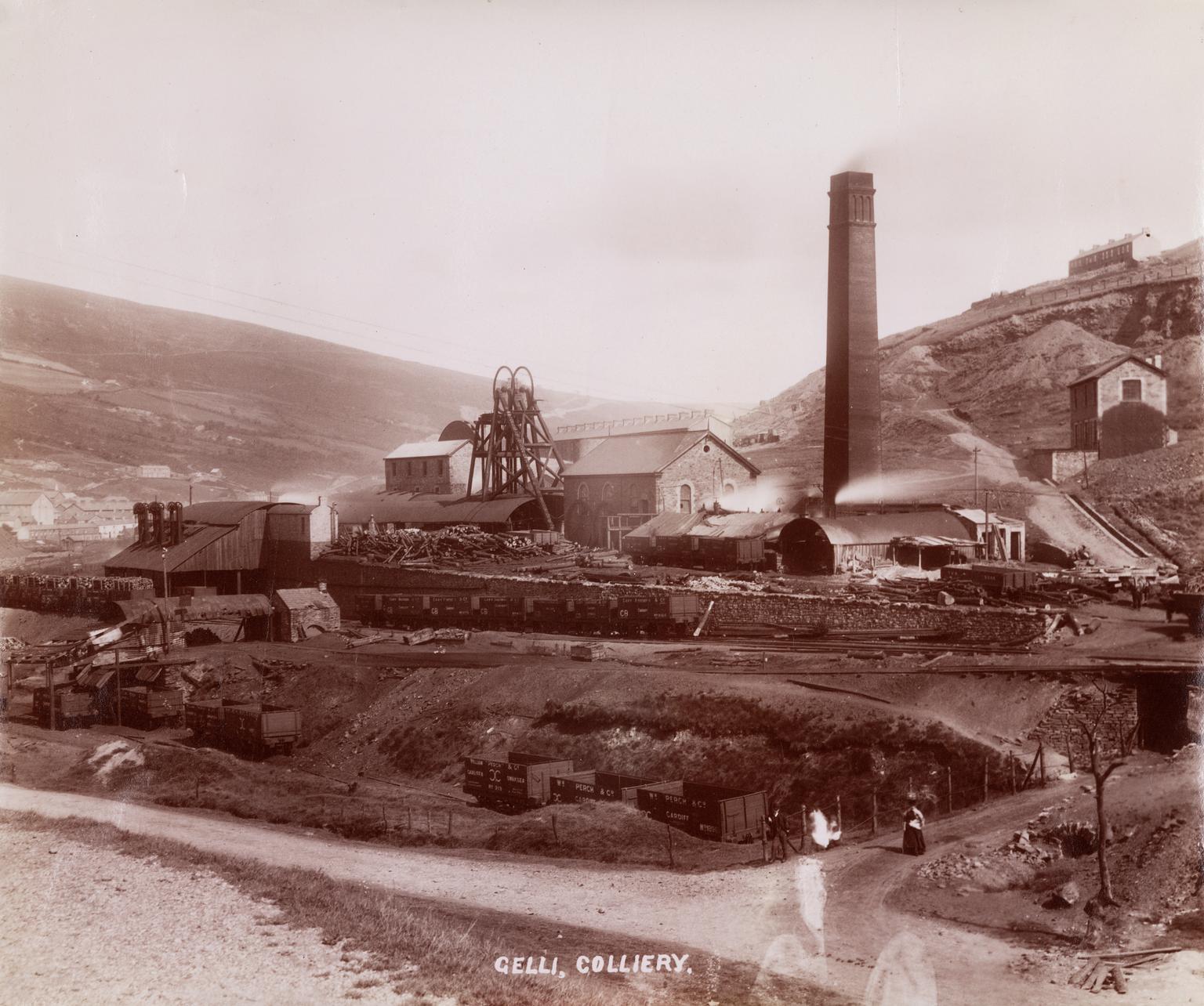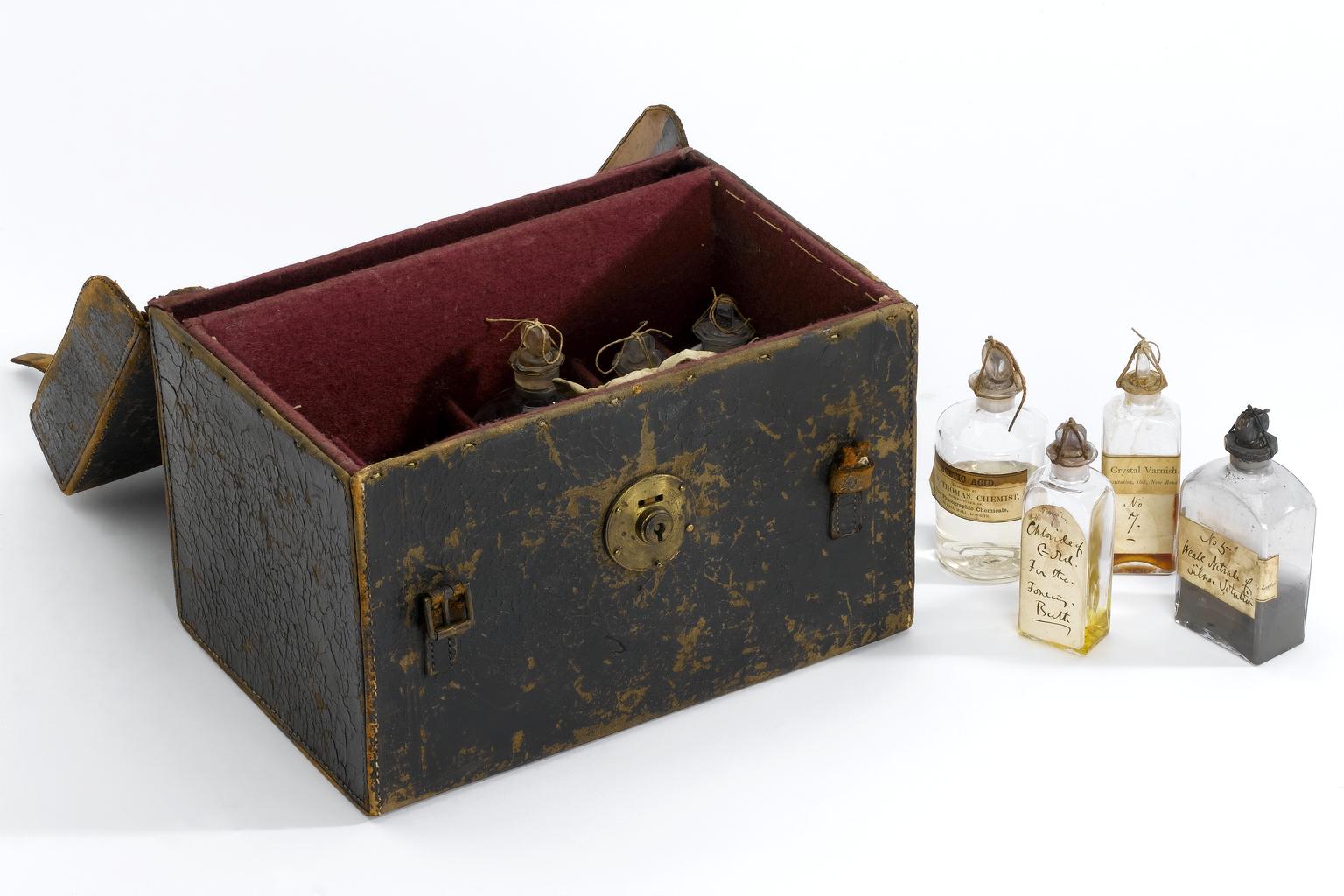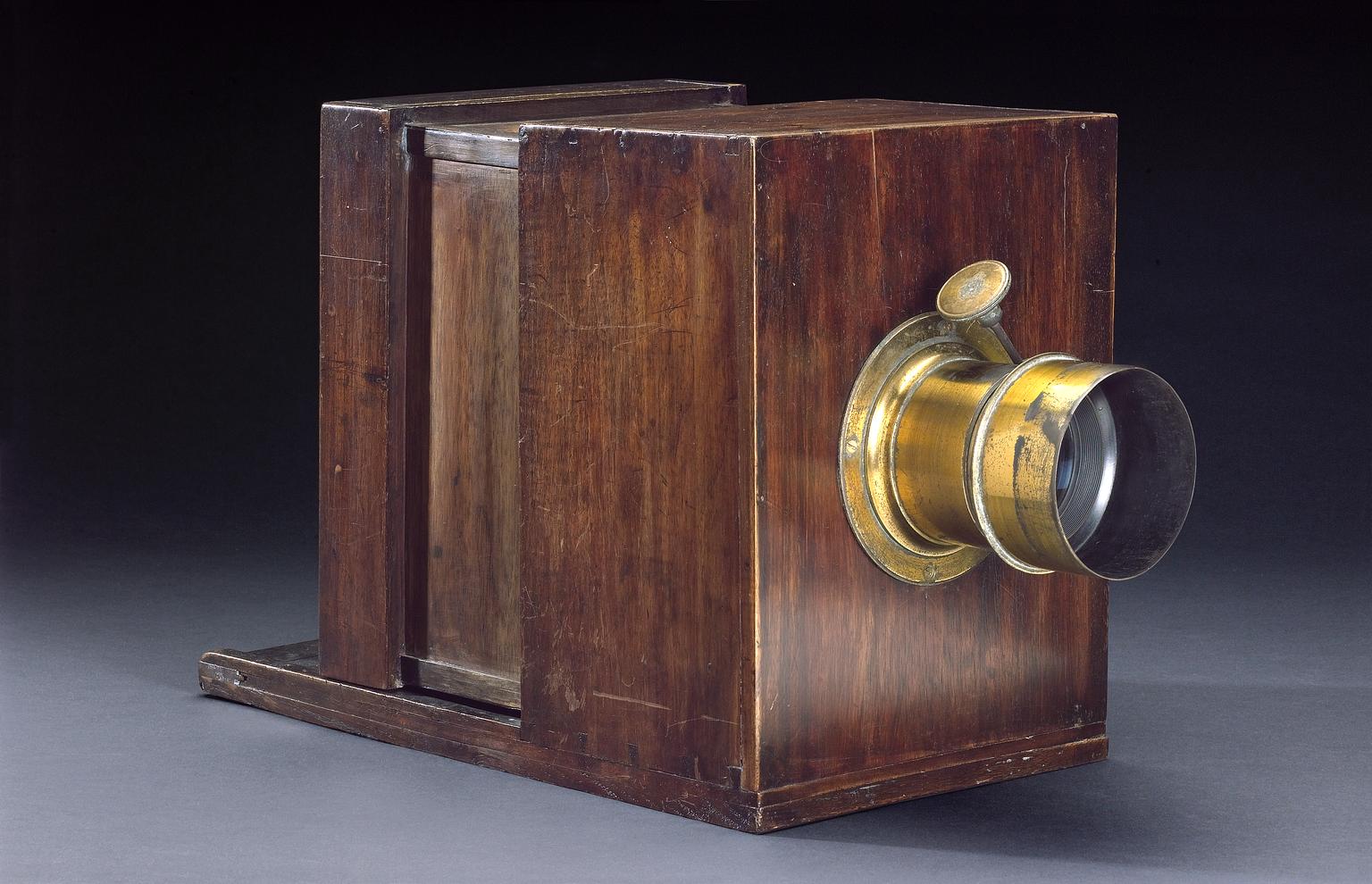Albumen negatives
The first successful method of photography on glass was the albumen process, developed in 1848 by Abel Niépce de Saint-Victor. A glass plate was coated with albumen extracted from egg white and treated with light-sensitive chemicals. Very fine detail was captured in the negative, but exposures of 5–15 minutes were required depending on the light. This made it unsuitable for portraiture, although it could be used for landscapes and architectural studies.

The albumen on glass process remained in use until the 1860s, although it never achieved widespread popularity. Hence, albumen negatives are rarely found. They can only be distinguished from wet collodion negatives by complex chemical tests.
Collodion negatives
1851 marked the beginning of a new era in photography with the introduction of the first fully practical process for negatives on glass. The invention, which quickly replaced all earlier photographic processes, was F. Scott Archer’s wet collodion process. A sheet of glass was hand-coated with collodion (an explosive solution of guncotton dissolved in ether) containing salt. The plate was then treated with silver nitrate, which reacted with the salt to form light-sensitive silver chloride. The plate had to be exposed in the camera and developed before it dried and became impervious to the processing solutions, hence the description ‘wet’.

The wet collodion process required considerable manual dexterity as all the preparations and processing had to be carried out on the spot, which meant carrying a complete portable darkroom around for landscape photography. The disadvantages were, however, compensated for by the detail that could be captured on the negative and the greater sensitivity of the process. Exposure times varied from a few seconds to a few minutes, making it the most sensitive photographic process up to that time. Such short exposures meant that the process was well suited to portrait photography, as well as landscape and architectural studies.

Collodion negatives have a characteristic milky or creamy look when seen against a black background, reflecting a positive image. The coating is usually uneven at the edges and corners; at least one corner may be free of coating where it was held by the photographer during the preparation of the plate.
The wet collodion process remained in general use until the mid-1880s and is sometimes still used today in the printing industry.
Gelatin dry plate
The inconvenience of the wet collodion process led to the demand for plates prepared in advance and stored for several days or weeks before exposure and/or processing. In 1871, Dr. R.L. Maddox introduced the gelatin dry plate process. After various improvements, the process went into general manufacture in 1878, rapidly replacing the wet collodion process. The plates were bought ready-prepared and could be stored for several weeks or months before exposure and development. The development of the plates was still carried out by the photographer.
When first introduced, the gelatin dry plates were 180 times slower than the wet collodion ones. Rapid improvements in their sensitivity meant that by the 1870s, truly instantaneous photographs—with exposures of a fraction of a second—were possible.
Gelatin dry plates were coated by machine and thus show even coatings right up to the edge of the plate (deterioration may have caused some flaking in places). The image is generally dark when seen in reflected light (i.e. dark when viewed in front of a black background) although tarnishing may make it appear silvery and reflective. The negatives are frequently found stored in the manufacturers’ boxes.
Gelatin dry plates continued to be used until the 1970s.
Hi I have two glass photographs (positive not negative) they are signed Parkinson and dated 1898
They are likely family shots of my great grandfather and mother who lived in Crewe. I am trying to find out more about them. Any ideas? I am happy to bring them over to Bradford
Did you get a reply, Peter? I am interested to know how you got on.
I have a photograph on glass of my great grandfather in his Royal Marines uniform . He joined the marines in 1860. I therefore assume the photograph is somewhere between 1860 – 1875 when he resigned. The quality is good. How do I look after/ preserve the picture.
I live in Rossendale and I’m happy to attend the museum in Bradford.
Kind regards
Denis Heaton
I have two glass photographs (positives) of ancestors, which pre-date 1857 (death of one). Also some colour glass from c 1940.
I have 4 pictures of niagra falls on glass would like to know more about them and what they might be worth. Thank you. Kathleen
l have a photo of the head and shoulders of my wife’s grandmother’s sister. We took the backing off to see if there was any information on the backing and realized that once we had removed the gold-coloured backing the photo practically disappeared. Once the gold card was placed behind the image on the glass it immediately reappeared and looks like a very professional photograph of a beautiful woman dated approximately late 19th or very early 20th century. Any idea how or what this procedure is called and executed.
What would be the likely speed of a 1915 – 1920 glass plate? Were they available in various speeds?
Hope you can help
Peter Barton
I have small old white rectangle which when held to light looks like a detailed photo but when viewed in normal light looks almost like a mold…2D. Can’t seem to find anything about it. Bought at a rural barn sale. Very old
Hi I have glass negatives of Sir Winston Churchill on board the uss Augusta. He was meeting president Roosevelt. I would like to know if they are valuable.